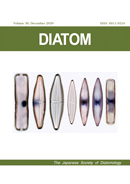Volume 36
Displaying 1-8 of 8 articles from this issue
- |<
- <
- 1
- >
- >|
Short report
-
2020Volume 36 Pages 1-12
Published: December 25, 2020
Released on J-STAGE: December 16, 2020
Download PDF (17524K) -
2020Volume 36 Pages 13-21
Published: December 25, 2020
Released on J-STAGE: December 16, 2020
Download PDF (16980K)
Original paper
-
2020Volume 36 Pages 23-34
Published: December 25, 2020
Released on J-STAGE: December 16, 2020
Download PDF (3216K) -
2020Volume 36 Pages 35-45
Published: December 25, 2020
Released on J-STAGE: December 16, 2020
Download PDF (40793K) -
2020Volume 36 Pages 47-67
Published: December 25, 2020
Released on J-STAGE: December 16, 2020
Download PDF (30883K) -
2020Volume 36 Pages 69-79
Published: December 25, 2020
Released on J-STAGE: December 16, 2020
Download PDF (14690K)
Research note
-
2020Volume 36 Pages 81-83
Published: December 25, 2020
Released on J-STAGE: December 16, 2020
Download PDF (739K)
Short report
-
2020Volume 36 Pages 85-91
Published: December 25, 2020
Released on J-STAGE: December 16, 2020
Download PDF (4903K)
- |<
- <
- 1
- >
- >|
